Martes
Eventos economicos
Indice de las casas
Confianza del consumidor
Confianza del inversionista
Manufactura en Dallas
Subasta de bonos
S&P Case-Shiller HPI
9:00 AM ET
Consumer Confidence
10:00 AM ET
State Street Investor Confidence Index
10:00 AM ET
Dallas Fed Mfg Survey
10:30 AM ET
4-Week Bill Announcement
11:00 AM ET
3-Month Bill Auction
11:30 AM ET
6-Month Bill Auction
11:30 AM ET
Tuesday 29/05/12 Manufactura en Dallas
Re: Tuesday 29/05/12 Manufactura en Dallas
Treasurys Price Chg Yield %
2-Year Note 0/32 0.293
10-Year Note 2/32 1.739
* at close
8:09 p.m. EDT 05/28/12Futures Last Change Settle
Crude Oil 90.97 0.31 90.86
Gold 1574.9 15.1 1571.2
E-mini Dow 12451 22 12429
E-mini S&P 500 1318.50 3.50 1315.00
8:19 p.m. EDT 05/28/12Currencies Last (mid) Prior Day †
Japanese Yen (USD/JPY) 79.60 79.47
Euro (EUR/USD) 1.2516 1.2542
† Late Monday in New York
2-Year Note 0/32 0.293
10-Year Note 2/32 1.739
* at close
8:09 p.m. EDT 05/28/12Futures Last Change Settle
Crude Oil 90.97 0.31 90.86
Gold 1574.9 15.1 1571.2
E-mini Dow 12451 22 12429
E-mini S&P 500 1318.50 3.50 1315.00
8:19 p.m. EDT 05/28/12Currencies Last (mid) Prior Day †
Japanese Yen (USD/JPY) 79.60 79.47
Euro (EUR/USD) 1.2516 1.2542
† Late Monday in New York
- admin
- Site Admin
- Mensajes: 165559
- Registrado: Mié Abr 21, 2010 9:02 pm
Re: Tuesday 29/05/12 Manufactura en Dallas
Copper May 28,20:19
Bid/Ask 3.5020 - 3.5021
Change -0.0027 -0.08%
Low/High 3.4998 - 3.5097
Charts
Nickel May 28,20:19
Bid/Ask 7.6482 - 7.6699
Change -0.0213 -0.28%
Low/High 7.6477 - 7.6727
Charts
Aluminum May 28,20:17
Bid/Ask 0.8920 - 0.8940
Change -0.0026 -0.29%
Low/High 0.8920 - 0.8963
Charts
Zinc May 28,14:00
Bid/Ask 0.8599 - 0.8612
Change +0.0000 +0.00%
Low/High 0.8599 - 0.8613
Charts
Lead May 28,14:00
Bid/Ask 0.8765 - 0.8781
Change +0.0001 +0.01%
Low/High 0.8764 - 0.8782
Bid/Ask 3.5020 - 3.5021
Change -0.0027 -0.08%
Low/High 3.4998 - 3.5097
Charts
Nickel May 28,20:19
Bid/Ask 7.6482 - 7.6699
Change -0.0213 -0.28%
Low/High 7.6477 - 7.6727
Charts
Aluminum May 28,20:17
Bid/Ask 0.8920 - 0.8940
Change -0.0026 -0.29%
Low/High 0.8920 - 0.8963
Charts
Zinc May 28,14:00
Bid/Ask 0.8599 - 0.8612
Change +0.0000 +0.00%
Low/High 0.8599 - 0.8613
Charts
Lead May 28,14:00
Bid/Ask 0.8765 - 0.8781
Change +0.0001 +0.01%
Low/High 0.8764 - 0.8782
- admin
- Site Admin
- Mensajes: 165559
- Registrado: Mié Abr 21, 2010 9:02 pm
Re: Tuesday 29/05/12 Manufactura en Dallas
Yen down 79.58
Au down 1,571.40
Oil down 90.90
Euro down 1.2515
Nikkei -0.60%, Korea -0.06%, Australia -0.67%
Au down 1,571.40
Oil down 90.90
Euro down 1.2515
Nikkei -0.60%, Korea -0.06%, Australia -0.67%
- admin
- Site Admin
- Mensajes: 165559
- Registrado: Mié Abr 21, 2010 9:02 pm
Re: Tuesday 29/05/12 Manufactura en Dallas
Los futures del Dow Jones 22 puntos al alza.
- admin
- Site Admin
- Mensajes: 165559
- Registrado: Mié Abr 21, 2010 9:02 pm
Re: Tuesday 29/05/12 Manufactura en Dallas
China comenzara a aplicar el estimulo cash for clankers, pedira a los duenios de carros viejos que los cambien por nuevos para incentivar la demanda.
- admin
- Site Admin
- Mensajes: 165559
- Registrado: Mié Abr 21, 2010 9:02 pm
Re: Tuesday 29/05/12 Manufactura en Dallas
Colombia mantiene los intereses intactos: 5.25%
- admin
- Site Admin
- Mensajes: 165559
- Registrado: Mié Abr 21, 2010 9:02 pm
Re: Tuesday 29/05/12 Manufactura en Dallas
Al menos dos muertos en protesta contra Xstrata Perú
lunes 28 de mayo de 2012 20:18 GYT
Imprimir[-] Texto [+] Por Marco Aquino
LIMA (Reuters) - Al menos dos personas murieron y otras 40 resultaron heridas el lunes durante una violenta protesta de pobladores contra las operaciones de la minera Xstrata Copper en Perú, que ha visto afectado el transporte de sus concentrados en su mina Tintaya, aunque la unidad local sigue produciendo de forma normal.
La protesta contra Xstrata Copper comenzó hace una semana en la provincia Espinar, en el sur del país y donde opera Tintaya, en medio de reclamos de un aumento del aporte económico de la minera a la zona, poniendo otra vez bajo fuego al principal sector económico de Perú, que en los últimos años se ha visto afectado por manifestaciones contra proyectos clave.
El conflicto se agudizó con enfrentamientos entre policías y pobladores que intentaron tomar la mina Tintaya, debido a que algunos dirigentes de la zona piden el cierre de la operación de la firma por una supuesta contaminación ambiental en Espinar.
La presidenta de la junta de fiscales superiores del Cusco - donde esta Espinar-, Elisabeth Ortiz, afirmó a periodistas que dos personas murieron, 20 civiles resultaron heridos y otros 20 policías también han sufrido heridas por los choques.
"Una turba de manifestantes se apropió de un carro de propiedad del Ministerio Público y en esas circunstancias tomó de rehén al chofer y a un fiscal", dijo Ortiz. "El vehículo fue quemado, el conductor logró huir, pero al fiscal lo han obligado a trasladarse a otro lugar", agregó la funcionaria.
Imágenes de un canal de televisión local mostraron a cientos de personas protestando en Espinar y a algunos alzando a una de las víctimas. "Humala asesino", gritaban, refiriéndose al presidente Ollanta Humala.
Con esto sumarían al menos 10 las víctimas fatales que se registran en protestas sociales desde que el presidente y militar retirado Humala asumió el poder en julio del año pasado. En el anterior Gobierno del ex presidente Alan García se reportaron 174 muertos por protestas sociales, según datos oficiales.
La minería es clave para la economía de Perú, porque aporta el 60 por ciento de las exportaciones totales del país.
Perú posee vastos recursos mineros -es el segundo productor mundial de cobre y el sexto de oro-, pero la extracción suele toparse con el rechazo de pobladores que temen daños ambientales o piden una mayor tajada de los ingresos del sector.
Los conflictos, que suman casi 250 en todo el país andino, amenazan con frenar más proyectos mineros por unos 53.000 millones de dólares previstos para los próximos años.
PRODUCCION NORMAL, RESTRINGEN TRANSPORTE
El director general de operaciones Xstrata Perú, Luis Rivera, afirmó más temprano en una entrevista con Reuters que, pese al bloqueo, la mina produce con normalidad y que avanza en el desarrollo de su proyecto Antapaccay de 1.470 millones de dólares, vital para alargar el período de vida de la minera Tintaya.
"Nuestras operaciones a nivel de producción están normales y (sólo) estamos restringidos en el transporte de concentrados obviamente por el bloqueo de carreteras", precisó el ejecutivo.
"Sin embargo, tenemos stock en el puerto y nuestra producción se está 'stockeando' en la mina", refirió.
Tintaya de Xstrata está ubicada en una zona andina de Espinar, desde donde transporta su mineral por carretera hacia el puerto Matarani en la costa del Océano Pacífico.
"La restricción (en el transporte del mineral) es desde el miércoles de la semana pasada", dijo Rivera. "Por ahora nuestros embarques no están en peligro", agregó el ejecutivo.
Rivera de Xstata dijo que actualmente Tintaya aporta a la provincia de Espinar un 3 por ciento de sus utilidades antes de impuestos por un convenio con el Gobierno; además de otros aportes como el impuesto a la renta, canon y regalías mineras.
El ejecutivo precisó que los dirigentes de Espinar piden que el aporte de sus utilidades se eleve a un 30 por ciento, pese a que no se gasta en proyectos el dinero recaudado para la zona.
"El presupuesto municipal de la provincia de Espinar fue de unos 190 millones de soles anuales (unos 70 millones de dólares) en el 2011 y su eficiencia de gasto es de sólo el 30 por ciento y piden más dinero", afirmó Rivera.
"Somos una operación de ciclo cerrado y no arrojamos vertimiento al medio ambiente y cumplimos perfectamente todos los requerimientos de la legislación nacional", señaló.
PROYECTOS EN MARCHA
Xstrata Copper produce aproximadamente unas 90.000 toneladas de cobre al año en Tintaya, mina cuyo ciclo de vida culmina en el 2014. Por ello la firma desarrolla el proyecto Antapaccay que alargará la producción de la empresa hasta más allá del 2030.
Antapaccay es un proyecto que producirá en plena operación 160.000 toneladas, con lo cual el suministro de la compañía aumentaría en un 60 por ciento.
La protesta no ha afectado el desarrollo de Antapaccay.
"Estamos ya cerrando la construcción y el avance total del proyecto es de más del 75 por ciento de obras, debería estar operando a fines de agosto de este año, por ahora la fecha (de inicio de operaciones) se mantiene normal", dijo Rivera.
Xstrata Copper tiene además en sus manos en Perú el gigantesco proyecto de cobre Las Bambas, de unos 4.200 millones de dólares de inversión, ubicado en la región de Apurimac en los andes centrales del país andino y vecino al Cusco.
Las Bambas produciría desde el tercer trimestre del 2014 unas 400.000 toneladas de cobre anuales durante los primeros nueve años de la mina, según los planes de la compañía.
Una vez en producción, según analistas, la mina elevaría en un 30 por ciento la producción cuprífera de Perú.
"Las Bambas está a nivel de ingeniería, obviamente cualquier disturbio, ruido en la zona tiene una afectación a todos los proyectos de la región del sur de Perú", dijo Rivera.
lunes 28 de mayo de 2012 20:18 GYT
Imprimir[-] Texto [+] Por Marco Aquino
LIMA (Reuters) - Al menos dos personas murieron y otras 40 resultaron heridas el lunes durante una violenta protesta de pobladores contra las operaciones de la minera Xstrata Copper en Perú, que ha visto afectado el transporte de sus concentrados en su mina Tintaya, aunque la unidad local sigue produciendo de forma normal.
La protesta contra Xstrata Copper comenzó hace una semana en la provincia Espinar, en el sur del país y donde opera Tintaya, en medio de reclamos de un aumento del aporte económico de la minera a la zona, poniendo otra vez bajo fuego al principal sector económico de Perú, que en los últimos años se ha visto afectado por manifestaciones contra proyectos clave.
El conflicto se agudizó con enfrentamientos entre policías y pobladores que intentaron tomar la mina Tintaya, debido a que algunos dirigentes de la zona piden el cierre de la operación de la firma por una supuesta contaminación ambiental en Espinar.
La presidenta de la junta de fiscales superiores del Cusco - donde esta Espinar-, Elisabeth Ortiz, afirmó a periodistas que dos personas murieron, 20 civiles resultaron heridos y otros 20 policías también han sufrido heridas por los choques.
"Una turba de manifestantes se apropió de un carro de propiedad del Ministerio Público y en esas circunstancias tomó de rehén al chofer y a un fiscal", dijo Ortiz. "El vehículo fue quemado, el conductor logró huir, pero al fiscal lo han obligado a trasladarse a otro lugar", agregó la funcionaria.
Imágenes de un canal de televisión local mostraron a cientos de personas protestando en Espinar y a algunos alzando a una de las víctimas. "Humala asesino", gritaban, refiriéndose al presidente Ollanta Humala.
Con esto sumarían al menos 10 las víctimas fatales que se registran en protestas sociales desde que el presidente y militar retirado Humala asumió el poder en julio del año pasado. En el anterior Gobierno del ex presidente Alan García se reportaron 174 muertos por protestas sociales, según datos oficiales.
La minería es clave para la economía de Perú, porque aporta el 60 por ciento de las exportaciones totales del país.
Perú posee vastos recursos mineros -es el segundo productor mundial de cobre y el sexto de oro-, pero la extracción suele toparse con el rechazo de pobladores que temen daños ambientales o piden una mayor tajada de los ingresos del sector.
Los conflictos, que suman casi 250 en todo el país andino, amenazan con frenar más proyectos mineros por unos 53.000 millones de dólares previstos para los próximos años.
PRODUCCION NORMAL, RESTRINGEN TRANSPORTE
El director general de operaciones Xstrata Perú, Luis Rivera, afirmó más temprano en una entrevista con Reuters que, pese al bloqueo, la mina produce con normalidad y que avanza en el desarrollo de su proyecto Antapaccay de 1.470 millones de dólares, vital para alargar el período de vida de la minera Tintaya.
"Nuestras operaciones a nivel de producción están normales y (sólo) estamos restringidos en el transporte de concentrados obviamente por el bloqueo de carreteras", precisó el ejecutivo.
"Sin embargo, tenemos stock en el puerto y nuestra producción se está 'stockeando' en la mina", refirió.
Tintaya de Xstrata está ubicada en una zona andina de Espinar, desde donde transporta su mineral por carretera hacia el puerto Matarani en la costa del Océano Pacífico.
"La restricción (en el transporte del mineral) es desde el miércoles de la semana pasada", dijo Rivera. "Por ahora nuestros embarques no están en peligro", agregó el ejecutivo.
Rivera de Xstata dijo que actualmente Tintaya aporta a la provincia de Espinar un 3 por ciento de sus utilidades antes de impuestos por un convenio con el Gobierno; además de otros aportes como el impuesto a la renta, canon y regalías mineras.
El ejecutivo precisó que los dirigentes de Espinar piden que el aporte de sus utilidades se eleve a un 30 por ciento, pese a que no se gasta en proyectos el dinero recaudado para la zona.
"El presupuesto municipal de la provincia de Espinar fue de unos 190 millones de soles anuales (unos 70 millones de dólares) en el 2011 y su eficiencia de gasto es de sólo el 30 por ciento y piden más dinero", afirmó Rivera.
"Somos una operación de ciclo cerrado y no arrojamos vertimiento al medio ambiente y cumplimos perfectamente todos los requerimientos de la legislación nacional", señaló.
PROYECTOS EN MARCHA
Xstrata Copper produce aproximadamente unas 90.000 toneladas de cobre al año en Tintaya, mina cuyo ciclo de vida culmina en el 2014. Por ello la firma desarrolla el proyecto Antapaccay que alargará la producción de la empresa hasta más allá del 2030.
Antapaccay es un proyecto que producirá en plena operación 160.000 toneladas, con lo cual el suministro de la compañía aumentaría en un 60 por ciento.
La protesta no ha afectado el desarrollo de Antapaccay.
"Estamos ya cerrando la construcción y el avance total del proyecto es de más del 75 por ciento de obras, debería estar operando a fines de agosto de este año, por ahora la fecha (de inicio de operaciones) se mantiene normal", dijo Rivera.
Xstrata Copper tiene además en sus manos en Perú el gigantesco proyecto de cobre Las Bambas, de unos 4.200 millones de dólares de inversión, ubicado en la región de Apurimac en los andes centrales del país andino y vecino al Cusco.
Las Bambas produciría desde el tercer trimestre del 2014 unas 400.000 toneladas de cobre anuales durante los primeros nueve años de la mina, según los planes de la compañía.
Una vez en producción, según analistas, la mina elevaría en un 30 por ciento la producción cuprífera de Perú.
"Las Bambas está a nivel de ingeniería, obviamente cualquier disturbio, ruido en la zona tiene una afectación a todos los proyectos de la región del sur de Perú", dijo Rivera.
- admin
- Site Admin
- Mensajes: 165559
- Registrado: Mié Abr 21, 2010 9:02 pm
Re: Tuesday 29/05/12 Manufactura en Dallas
Petro Peru aumentara produccion
------
SUMMIT-Oferta bolsa Petroperú financiaría refinería
lunes 28 de mayo de 2012 19:16 GYT
Imprimir[-] Texto [+] Por Omar Mariluz
LIMA (Reuters) - La petrolera estatal Petroperú dijo el lunes que el capital que generará en el segundo semestre una oferta pública de sus acciones, así como de una posible emisión de deuda, ayudarán a financiar parte de un plan de unos 1.700 millones de dólares para aumentar la producción en su mayor refinería de petróleo.
La compañía petrolera busca elevar a 95.000 barriles por día (bpd) desde los actuales 65.000 bpd la producción de la refinería Talara, ubicada en el norte de Perú y una de las principales instalaciones de procesamiento del país.
"No voy a salir a la Bolsa o al mercado de bonos para comprar otra cosa que no sea garantizar lo de (la modernización de la refinería de) Talara", dijo el presidente de Petroperú, Humberto Campodónico, durante el Foro de Reuters sobre Inversión en América Latina.
Campodónico dijo que la compañía petrolera mantiene su plan de ofertar en el segundo semestre de este año, programado inicialmente para abril, hasta un 20 por ciento de acciones de la firma en la Bolsa de Valores de Lima.
El funcionario explicó que la demora busca permitir que se concreten planes de inversión, que en la actualidad se encuentran en evaluación, para así agregarle valor a la petrolera estatal antes de abrir su capital a la bolsa.
El banco francés Societe Generale se encargará de estructurar el financiamiento del plan de modernización de la refinería y además buscará un crédito de corto plazo, equivalente a un 10 por ciento del monto total del emprendimiento para el primer tramo de la ampliación.
El proyecto de ampliación de la refinería Talara será ejecutado por la española Técnicas Reunidas en agosto de este año, una vez culminados los estudios de ingeniería y entraría en operaciones en junio del 2016, según Campodónico.
"Esta refinería va a aumentar su capacidad en 50 por ciento, vamos a tener unidades que van a producir combustible ecológico que va a reducir la contaminación de azufre bajándola de 1.800 a 50 partes por millón", destacó el funcionario.
Campodónico refirió que la compañía petrolera también evalúa la ampliación y modernización de las refinerías de Conchán, en Lima y que produce 14.000 bpd, y de Iquitos, en la selva norte del Perú y que posee una capacidad de unos 10.000 bpd.
LOTES PETROLEROS
Petroperú se dedica actualmente sólo a la refinación, almacenamiento y comercialización de petróleo y sus derivados y compite en el país con la española Repsol. En la década de 1990, la firma dejó de explorar y extraer petróleo ante la privatización de varias de sus actividades.
El funcionario afirmó además que Petroperú planea retornar al negocio de la producción de crudo con una participación de entre 25 y 35 por ciento en los siete lotes petroleros que retornarán a manos del Estado entre el 2013 y 2016 y que operará la petrolera en asociación con una empresa privada.
El funcionario estimó que si Petroperú retorna a la producción petrolera con un socio estratégico privado, las utilidades de la empresa aumentarían hasta un 60 por ciento.
El Ministerio de Energía y Minas definiría en junio el esquema bajo el cual Petroperú, que el año pasado registró utilidades de alrededor de 130 millones de dólares, participará en los lotes petroleros que retornarán al Estado peruano.
"Pero lo que si se plantea es que cualquiera sea el esquema que finalmente se adopte, Petroperú entre como socio, y de la manera más rápida posible. Pero solo no lo veo desde mi punto de vista", señaló el presidente de la compañía.
Entre los contratos petroleros que están por vencer se encuentran el lote 1AB, de la argentina Pluspetrol, localizado en el norte cerca de la frontera con Ecuador; así como otro lote ubicado en la costa norte del país de la petrolera Monterrico.
Pasarían además a manos del Estados en los próximos años los lotes 3 y 4 de la firma Interoil, ubicados también en la costa norte peruana y cuyos contratos vencen entre el 2013 y 2015. Lo mismo ocurrirá con dos lotes de la peruana Graña Montero Petroperu y otros dos de la china Sapet.
PRODUCCION DE LUBRICANTES
Campodónico también reveló que Petroperú evalúa volver a la producción y comercialización de lubricantes en el país andino, en sociedad con las estatales Petróleos de Venezuela (PDVSA) y la brasileña Petrobras.
"Hemos conversado tanto con PDVSA y Petrobras la posibilidad de (entrar al negocio de lubricantes). Petroperú no tiene plantas de lubricantes, eso se vendió y se llamaba Petrolube", indicó el funcionario.
En la actualidad la española Repsol y la estadounidense Exxon Mobil controlan la mayor parte del mercado de lubricantes en Perú.
"Tendríamos que entrar a disputar una cuota de mercado con los que ya lo tienen por eso hemos encargado un estudio de mercado y pre factibilidad que estará listo para fines de junio", agregó Campodónico.
(Reporte de Omar Mariluz, editado por Mónica Vargas)
------
SUMMIT-Oferta bolsa Petroperú financiaría refinería
lunes 28 de mayo de 2012 19:16 GYT
Imprimir[-] Texto [+] Por Omar Mariluz
LIMA (Reuters) - La petrolera estatal Petroperú dijo el lunes que el capital que generará en el segundo semestre una oferta pública de sus acciones, así como de una posible emisión de deuda, ayudarán a financiar parte de un plan de unos 1.700 millones de dólares para aumentar la producción en su mayor refinería de petróleo.
La compañía petrolera busca elevar a 95.000 barriles por día (bpd) desde los actuales 65.000 bpd la producción de la refinería Talara, ubicada en el norte de Perú y una de las principales instalaciones de procesamiento del país.
"No voy a salir a la Bolsa o al mercado de bonos para comprar otra cosa que no sea garantizar lo de (la modernización de la refinería de) Talara", dijo el presidente de Petroperú, Humberto Campodónico, durante el Foro de Reuters sobre Inversión en América Latina.
Campodónico dijo que la compañía petrolera mantiene su plan de ofertar en el segundo semestre de este año, programado inicialmente para abril, hasta un 20 por ciento de acciones de la firma en la Bolsa de Valores de Lima.
El funcionario explicó que la demora busca permitir que se concreten planes de inversión, que en la actualidad se encuentran en evaluación, para así agregarle valor a la petrolera estatal antes de abrir su capital a la bolsa.
El banco francés Societe Generale se encargará de estructurar el financiamiento del plan de modernización de la refinería y además buscará un crédito de corto plazo, equivalente a un 10 por ciento del monto total del emprendimiento para el primer tramo de la ampliación.
El proyecto de ampliación de la refinería Talara será ejecutado por la española Técnicas Reunidas en agosto de este año, una vez culminados los estudios de ingeniería y entraría en operaciones en junio del 2016, según Campodónico.
"Esta refinería va a aumentar su capacidad en 50 por ciento, vamos a tener unidades que van a producir combustible ecológico que va a reducir la contaminación de azufre bajándola de 1.800 a 50 partes por millón", destacó el funcionario.
Campodónico refirió que la compañía petrolera también evalúa la ampliación y modernización de las refinerías de Conchán, en Lima y que produce 14.000 bpd, y de Iquitos, en la selva norte del Perú y que posee una capacidad de unos 10.000 bpd.
LOTES PETROLEROS
Petroperú se dedica actualmente sólo a la refinación, almacenamiento y comercialización de petróleo y sus derivados y compite en el país con la española Repsol. En la década de 1990, la firma dejó de explorar y extraer petróleo ante la privatización de varias de sus actividades.
El funcionario afirmó además que Petroperú planea retornar al negocio de la producción de crudo con una participación de entre 25 y 35 por ciento en los siete lotes petroleros que retornarán a manos del Estado entre el 2013 y 2016 y que operará la petrolera en asociación con una empresa privada.
El funcionario estimó que si Petroperú retorna a la producción petrolera con un socio estratégico privado, las utilidades de la empresa aumentarían hasta un 60 por ciento.
El Ministerio de Energía y Minas definiría en junio el esquema bajo el cual Petroperú, que el año pasado registró utilidades de alrededor de 130 millones de dólares, participará en los lotes petroleros que retornarán al Estado peruano.
"Pero lo que si se plantea es que cualquiera sea el esquema que finalmente se adopte, Petroperú entre como socio, y de la manera más rápida posible. Pero solo no lo veo desde mi punto de vista", señaló el presidente de la compañía.
Entre los contratos petroleros que están por vencer se encuentran el lote 1AB, de la argentina Pluspetrol, localizado en el norte cerca de la frontera con Ecuador; así como otro lote ubicado en la costa norte del país de la petrolera Monterrico.
Pasarían además a manos del Estados en los próximos años los lotes 3 y 4 de la firma Interoil, ubicados también en la costa norte peruana y cuyos contratos vencen entre el 2013 y 2015. Lo mismo ocurrirá con dos lotes de la peruana Graña Montero Petroperu y otros dos de la china Sapet.
PRODUCCION DE LUBRICANTES
Campodónico también reveló que Petroperú evalúa volver a la producción y comercialización de lubricantes en el país andino, en sociedad con las estatales Petróleos de Venezuela (PDVSA) y la brasileña Petrobras.
"Hemos conversado tanto con PDVSA y Petrobras la posibilidad de (entrar al negocio de lubricantes). Petroperú no tiene plantas de lubricantes, eso se vendió y se llamaba Petrolube", indicó el funcionario.
En la actualidad la española Repsol y la estadounidense Exxon Mobil controlan la mayor parte del mercado de lubricantes en Perú.
"Tendríamos que entrar a disputar una cuota de mercado con los que ya lo tienen por eso hemos encargado un estudio de mercado y pre factibilidad que estará listo para fines de junio", agregó Campodónico.
(Reporte de Omar Mariluz, editado por Mónica Vargas)
- admin
- Site Admin
- Mensajes: 165559
- Registrado: Mié Abr 21, 2010 9:02 pm
Re: Tuesday 29/05/12 Manufactura en Dallas
Maniana subasta de bonos Italianos.
- admin
- Site Admin
- Mensajes: 165559
- Registrado: Mié Abr 21, 2010 9:02 pm
Re: Tuesday 29/05/12 Manufactura en Dallas
Desempleo y ventas retail desaniman al mercado en Tokyo.
Oil up 90.92
El Nikkie -0.5%
Au down 1,572
+29
Oil up 90.92
El Nikkie -0.5%
Au down 1,572
+29
- admin
- Site Admin
- Mensajes: 165559
- Registrado: Mié Abr 21, 2010 9:02 pm
Re: Tuesday 29/05/12 Manufactura en Dallas
Las companias Europeas no quieren prestamos de bancos Europeos, estan viniendo de frente a US. Las companias Europeas se han prestado $18 billones a los intereses actuales. Esos son los prestamos mas grandes desde el 2007.
EUROPE BUSINESS NEWSMay 28, 2012, 7:05 p.m. ET
Europe Turning To U.S. for Loans
By DANA CIMILLUCA And SERENA NG
In the latest symptom of Europe's financial turmoil, the region's riskier companies are bypassing banks and investors at home and turning to the U.S. for loans.
European companies borrowed some €14.4 billion (about $18 billion at current rates) in the U.S. leveraged-loan market this year through Friday, more than double the €6.7 billion for all of 2011, according to data from S&P Capital IQ LCD. That is the highest amount since at least 2007, the height of the last boom in leveraged lending, when full-year loan volume was €12.2 billion, according to S&P.
The leveraged-loan market is used by companies with high-yield or noninvestment-grade credit ratings, making it particularly sensitive to Europe's debt crisis, now in its third year.
In boom times, this market is driven by financings for mergers and acquisitions. But with companies now largely shying away from M&A, recent deals more often involve borrowers swapping old loans for new ones.
Worries about Europe have risen in the past month. An election in Greece earlier this month raised the specter that the country could be forced from the euro zone. New elections are set for June 17.
Meanwhile, fears over the health of banks in Spain, the euro zone's fourth-largest economy, have deepened the concerns. On Friday, Spain's government announced the effective nationalization of one of the country's biggest lenders because of bad loans. The move sparked fears that returning the Spanish banking sector to health will cost more than the country can manage.
The increased demand for European debt has been driven by a dearth of high-yielding options from U.S. companies, bankers say. That demand could help keep a lid on European corporate borrowing costs.
One risk for European firms is that if the supply of leveraged loans from U.S. companies increases, the demand for European debt could diminish. That could reduce the European companies' funding options, pushing up their costs. "For practical purposes the credit markets are shut in Europe and companies need to find outlets," says Frederick Haddad, a partner and senior loan portfolio manager at GoldenTree Asset Management in New York.
A number of European companies with big borrowing needs, such as racing group Formula One and chemical company Ineos Group Ltd., have turned to the U.S. in recent weeks to find buyers for at least half of their leveraged loans, according to Thomson Reuters LPC.
Ineos placed more than three-quarters of a roughly $3 billion issue in the U.S. The Swiss company wanted to sell more of the deal in Europe, but realized it wouldn't have found enough demand, according to a person familiar with the matter. Adding to the difficulty of selling the deal in Europe: This was a so-called covenant-lite offering, meaning it contains looser default triggers than other loans.
Companies aren't abandoning Europe altogether. German auto parts maker Schaeffler AG, for example, sold most of a roughly $8 billion debt package in February to European investors. A slice of the borrowing took place in the U.S., however, because the company wouldn't have been able to raise the entire amount in Europe, this person said.
The leveraged-loan market is made up of banks as well as institutional investors like hedge funds and debt-investment pools known as collateralized loan obligations. In Europe, banks' appetite for riskier loans has taken a hit as many lenders grapple with their own funding challenges and stricter capital requirements. Meanwhile, CLO issuance and investors' risk appetite in general have fallen in Europe as a result of years of unremitting financial upheaval.
In the U.S., the economy has held up better and banks are generally on sounder footing. Demand for high-yield debt from mutual funds is causing a stream of cash for companies in Europe to tap, while CLO issuance has been more robust than in Europe, bankers say.
Robert Hetu, a managing director of investment banking at Credit Suisse Group AG, CSGN.VX -1.39%says U.S. investors are keen to lend to European companies with good track records and businesses that are easy to understand.
Credit Suisse arranged loan deals for companies including Germany's Grohe Holding GmbH, a maker of bathroom fittings, and Misys PLC, a U.K.-based provider of banking software, which both issued debt in the U.S. and Europe earlier this month.
European companies are under pressure to diversify their funding, said Ken Young, a senior managing director at private-equity firm CVC, which owns Formula One.
The racing group, which is preparing an initial public offering of shares in Singapore, recently placed a $1.4 billion loan due in 2017 that was split roughly equally between Europe in the U.S.
Mr. Young said the surge in U.S. leveraged loans is in part the result of increasing integration between European and U.S. credit markets.
In another reflection of Europe's debt crisis, the region's companies borrowed more from the bond market than they did from banks in the first quarter, according to data provider Dealogic. Banks have long dominated lending in Europe.
Some bankers say the trends could continue, especially if next month's Greek election includes a strong showing by parties opposed to an international bailout.
"Many European issuers wishing to raise a sizable amount in the loan market may need to tap the dollar market for additional funding or focus on alternative asset classes," said Kristian Orssten, the head of European high yield and loan capital markets at J.P. Morgan Chase JPM -1.38%& Co. in London. J.P. Morgan was an underwriter on both the Schaeffler and Ineos offerings.
EUROPE BUSINESS NEWSMay 28, 2012, 7:05 p.m. ET
Europe Turning To U.S. for Loans
By DANA CIMILLUCA And SERENA NG
In the latest symptom of Europe's financial turmoil, the region's riskier companies are bypassing banks and investors at home and turning to the U.S. for loans.
European companies borrowed some €14.4 billion (about $18 billion at current rates) in the U.S. leveraged-loan market this year through Friday, more than double the €6.7 billion for all of 2011, according to data from S&P Capital IQ LCD. That is the highest amount since at least 2007, the height of the last boom in leveraged lending, when full-year loan volume was €12.2 billion, according to S&P.
The leveraged-loan market is used by companies with high-yield or noninvestment-grade credit ratings, making it particularly sensitive to Europe's debt crisis, now in its third year.
In boom times, this market is driven by financings for mergers and acquisitions. But with companies now largely shying away from M&A, recent deals more often involve borrowers swapping old loans for new ones.
Worries about Europe have risen in the past month. An election in Greece earlier this month raised the specter that the country could be forced from the euro zone. New elections are set for June 17.
Meanwhile, fears over the health of banks in Spain, the euro zone's fourth-largest economy, have deepened the concerns. On Friday, Spain's government announced the effective nationalization of one of the country's biggest lenders because of bad loans. The move sparked fears that returning the Spanish banking sector to health will cost more than the country can manage.
The increased demand for European debt has been driven by a dearth of high-yielding options from U.S. companies, bankers say. That demand could help keep a lid on European corporate borrowing costs.
One risk for European firms is that if the supply of leveraged loans from U.S. companies increases, the demand for European debt could diminish. That could reduce the European companies' funding options, pushing up their costs. "For practical purposes the credit markets are shut in Europe and companies need to find outlets," says Frederick Haddad, a partner and senior loan portfolio manager at GoldenTree Asset Management in New York.
A number of European companies with big borrowing needs, such as racing group Formula One and chemical company Ineos Group Ltd., have turned to the U.S. in recent weeks to find buyers for at least half of their leveraged loans, according to Thomson Reuters LPC.
Ineos placed more than three-quarters of a roughly $3 billion issue in the U.S. The Swiss company wanted to sell more of the deal in Europe, but realized it wouldn't have found enough demand, according to a person familiar with the matter. Adding to the difficulty of selling the deal in Europe: This was a so-called covenant-lite offering, meaning it contains looser default triggers than other loans.
Companies aren't abandoning Europe altogether. German auto parts maker Schaeffler AG, for example, sold most of a roughly $8 billion debt package in February to European investors. A slice of the borrowing took place in the U.S., however, because the company wouldn't have been able to raise the entire amount in Europe, this person said.
The leveraged-loan market is made up of banks as well as institutional investors like hedge funds and debt-investment pools known as collateralized loan obligations. In Europe, banks' appetite for riskier loans has taken a hit as many lenders grapple with their own funding challenges and stricter capital requirements. Meanwhile, CLO issuance and investors' risk appetite in general have fallen in Europe as a result of years of unremitting financial upheaval.
In the U.S., the economy has held up better and banks are generally on sounder footing. Demand for high-yield debt from mutual funds is causing a stream of cash for companies in Europe to tap, while CLO issuance has been more robust than in Europe, bankers say.
Robert Hetu, a managing director of investment banking at Credit Suisse Group AG, CSGN.VX -1.39%says U.S. investors are keen to lend to European companies with good track records and businesses that are easy to understand.
Credit Suisse arranged loan deals for companies including Germany's Grohe Holding GmbH, a maker of bathroom fittings, and Misys PLC, a U.K.-based provider of banking software, which both issued debt in the U.S. and Europe earlier this month.
European companies are under pressure to diversify their funding, said Ken Young, a senior managing director at private-equity firm CVC, which owns Formula One.
The racing group, which is preparing an initial public offering of shares in Singapore, recently placed a $1.4 billion loan due in 2017 that was split roughly equally between Europe in the U.S.
Mr. Young said the surge in U.S. leveraged loans is in part the result of increasing integration between European and U.S. credit markets.
In another reflection of Europe's debt crisis, the region's companies borrowed more from the bond market than they did from banks in the first quarter, according to data provider Dealogic. Banks have long dominated lending in Europe.
Some bankers say the trends could continue, especially if next month's Greek election includes a strong showing by parties opposed to an international bailout.
"Many European issuers wishing to raise a sizable amount in the loan market may need to tap the dollar market for additional funding or focus on alternative asset classes," said Kristian Orssten, the head of European high yield and loan capital markets at J.P. Morgan Chase JPM -1.38%& Co. in London. J.P. Morgan was an underwriter on both the Schaeffler and Ineos offerings.
- admin
- Site Admin
- Mensajes: 165559
- Registrado: Mié Abr 21, 2010 9:02 pm
Re: Tuesday 29/05/12 Manufactura en Dallas
Los graficos del dia, 
.

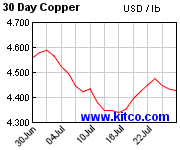
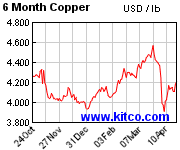
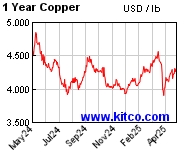
.

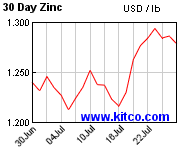
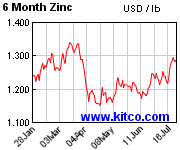
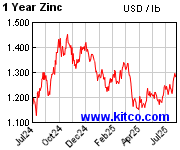
.

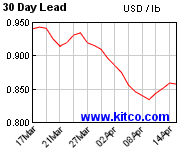
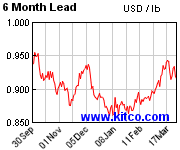
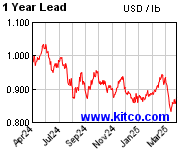
.
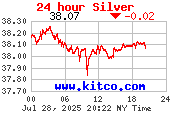
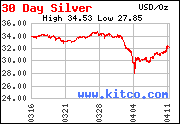
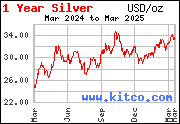
.
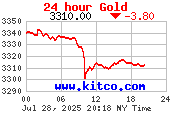
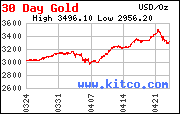
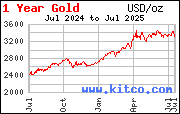
.
.




.




.




.



.



.
- Comodoro
- Mensajes: 980
- Registrado: Jue May 06, 2010 8:24 am
- Ubicación: LIMA
Re: Tuesday 29/05/12 Manufactura en Dallas
Las ventas de casas suben 6.9% en Australia.
Euro down 1.2576
+45
Euro down 1.2576
+45
- admin
- Site Admin
- Mensajes: 165559
- Registrado: Mié Abr 21, 2010 9:02 pm
Re: Tuesday 29/05/12 Manufactura en Dallas
El Asia al alza, el Nikkei a la baja.
- admin
- Site Admin
- Mensajes: 165559
- Registrado: Mié Abr 21, 2010 9:02 pm
¿Quién está conectado?
Usuarios navegando por este Foro: No hay usuarios registrados visitando el Foro y 22 invitados
